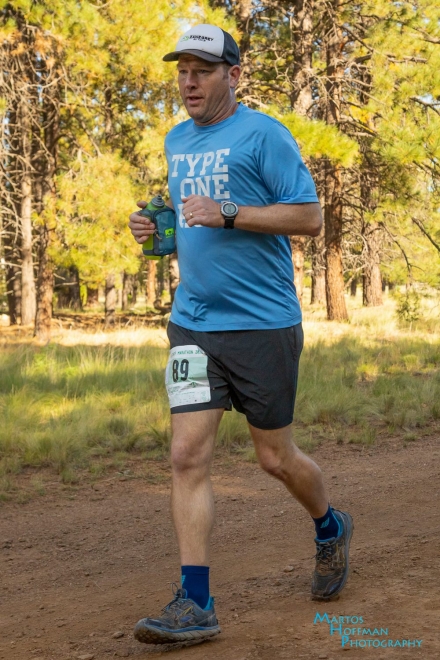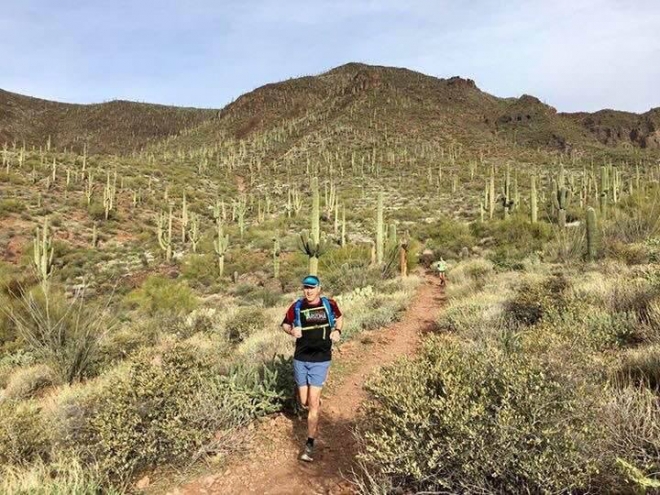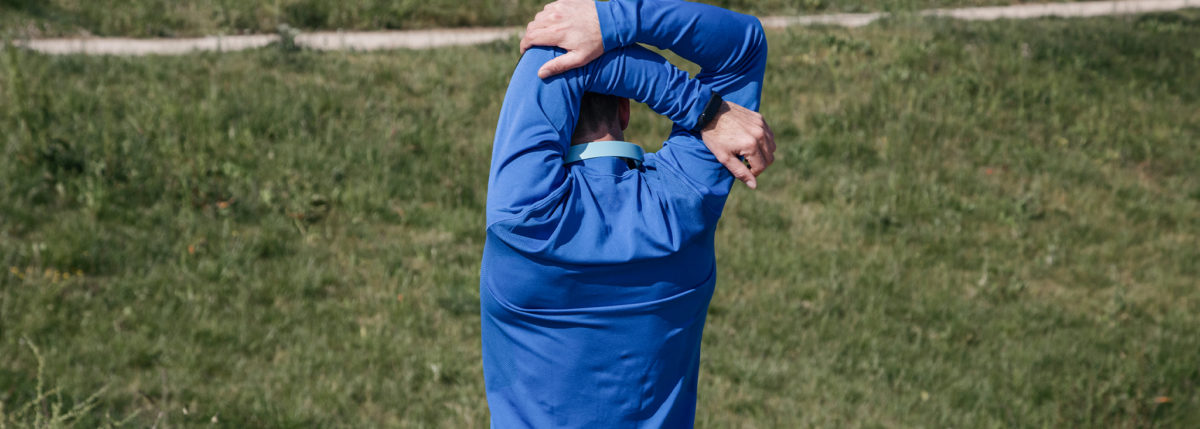Runner Spotlight: Patrick Votruba
Editor’s Note: Patrick was a member of Beyond Type Run‘s 2018 TCS New York City Marathon Team sponsored by Dexcom and Insulet, makers of the tubeless Omnipod Insulin Management System. Learn more about the 2019 Beyond Type Run team here.
How long have you been running?
I ran a 10K the summer after high school for college, and have been running sporadically since then. In graduate school my wife and I would run a 5K or 10K every once in a while. When we had our first child, I bought a jogging stroller because I didn’t know what else to do. In 2012 I started dropping a lot of weight. I was trying to at first. In hindsight, it was probably the diabetes kind of creeping in. So by 2013, I had dropped probably 35-40 pounds. I had gotten a little bit faster and decided I wanted to run a marathon in under four hours so I signed up for the Tucson Marathon. So in December I ran that at my lightest weight since high school. Spring 2014 is when my symptoms really started up. I was getting neuropathy in my feet. I finally went to the doctor that summer and was diagnosed with type 1 diabetes. Since then I’ve been a more regular runner, probably five to six times a week. At first it was because I didn’t want to gain all that weight back. But now it’s become my stress management and health management tool.

How did your training shift after your diagnosis?
I had to be conscious of my diabetes. I can still remember the first time I went low on a run. I think it was something as simple as planning to take two units of insulin and accidentally taking three. I was really insulin-sensitive at first. Unless it’s going be a really short run, I always carry gels and I pretty much always carry water. Part of that is just living in Phoenix.
Do you wear a continuous glucose monitor (CGM) while running?
I’ve been wearing a Dexcom G6 while training. It’s been interesting. I find that I spike pretty high at the beginning of a run. So it’s kind of changed the way I think about fueling a little bit. I go up and then probably 30-40 minutes into the run, I start coming down and dropping pretty steadily. Before the Dexcom, I usually only tested my blood sugar three to four times a day. So if I would run in the morning, I was checking in the morning anyway. If my blood sugar was high, I would just go run. If my blood sugar was between 5.5 mmol/L100 mg/dL and 7.8 mmol/L140 mg/dL, I’d usually eat a banana or something and then go run. I had never really bothered checking after the run unless I felt low. With the Dexcom I have found that if I run in the afternoon or evening, I tend to drop much faster.
Tell us about the ultra marathons you ran in
I ran a couple marathons after I was diagnosed. Then I started running with groups and got into the trail running scene in Phoenix, which is pretty big and vibrant. In 2015, I started doing a few trail races. In May 2016, I did a 50K. It was a night race on the trail. My first two ultras were actually at night. You wear a headlamp or carry a flashlight. It’s out in the middle of the desert. The first trail I did, one was in May, and then I did one that following September. It’s too hot in Phoenix to have a race that long during the day. After the sun goes down, even if it’s a hundred degrees, it’s definitely still hot, but it’s doable.
What are the distances of the ultra marathons?
The first two I did were 50 kilometers. That’s about 31 miles. The trail distance is always a little rough. And then I did a 60K point-to-point when it was raining all day in the mud. And then I was building up that spring. In 2017, I tried running the Zane Grey 50-mile endurance run here in Arizona. It’s up in the Mogollon Rim area in north-east Arizona. This trail is like the entire stretch of what they call “The Highline Trail.” It was first 50-mile attempt, and I ended up not finishing. I think I tapped out at about 37 miles. But this year, I went back to Zane Grey and finished it.
How long did it take you to complete the ultra marathons?
It varies greatly by the course. So like, my first one was my fastest 50k; I think it was like five hours and twenty-something minutes. I don’t know if I’ll ever be that fast in a race like that again. That 60k, with the rain and the mud and everything, that took me probably close to nine hours, I think. And then 50 miles, it took me fourteen hours. It’s a lot of going up and down and up and down. Once you get past the 50k distance, there is usually a lot of hiking involved, especially on the uphill parts.

Have you ever run in a New York City marathon before?
No, I haven’t. I think I have run eight or nine marathons. Only two what I would consider urban marathons. I did Twin Cities, and I did Rock ‘n’ Roll in Phoenix. Everything else has been a smaller race. This is gonna be a completely new experience.
What are you most excited about for the marathon?
I think it’s the crowds. Once you get over the bridge, I’ve heard there’s people cheering pretty much the whole way.
Will you continue using your Dexcom after the race?
Yeah, I’ll continue using it. I’ve gotten used to it. I like it. I never really had data before. I kind of spike really high between meals and during exercise and stuff. I can manage that a little bit better with the continuous glucose monitor (CGM). It’s helpful that way.
What running plans do you have for after the New York marathon?
That’s a good question. The New York marathon is kind of a big deal so I have made zero plans. I’m not registered for any races beyond New York. I kinda organized my race schedule and my training schedule for the fall around New York.
As someone who was diagnosed at age 40, what advice would you offer to an adult who was recently diagnosed with Type 1 diabetes?
I think you can kind of just keep doing what you’re doing. For me, I became more active and I think that’s important. You hear stories about people who were discouraged from athletic activities after diagnosis. I would just say stay active. I can tell that on days when I’m training, I’m much more sensitive to insulin and have much better control of my blood sugar. And if possible try to stick to a schedule. I have pretty steady routines. Most importantly, just remember you can keep doing whatever it is you like to do.
Read about the TCS 2018 New York City Marathon Team
To learn more about the 2019 TCS New York City Marathon Beyond Type Run team click here.





